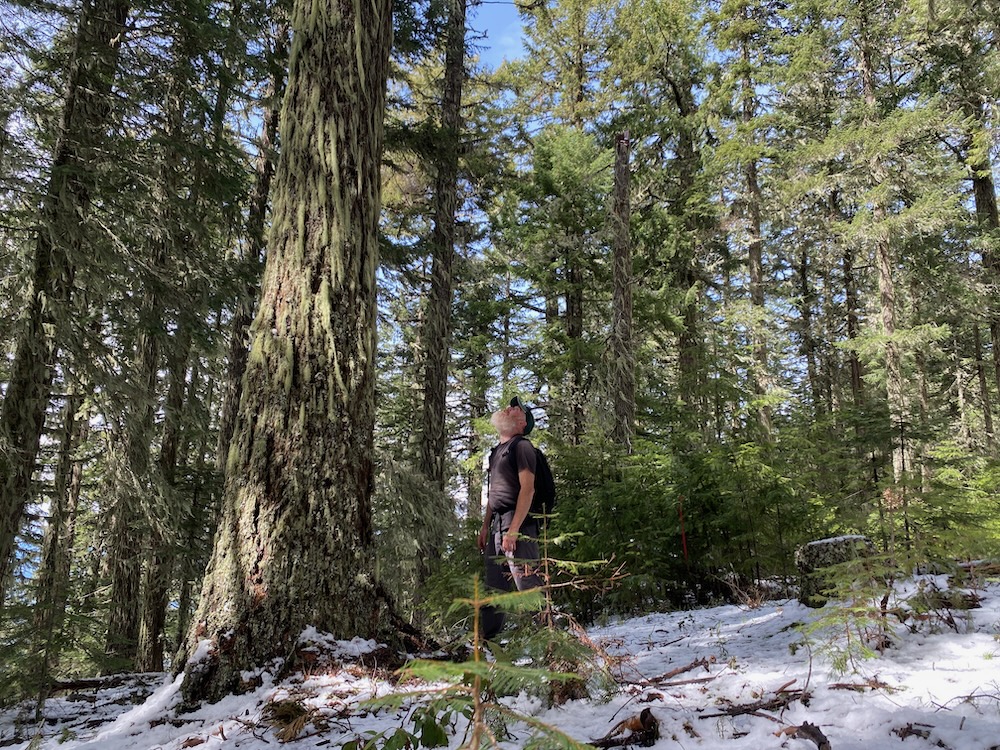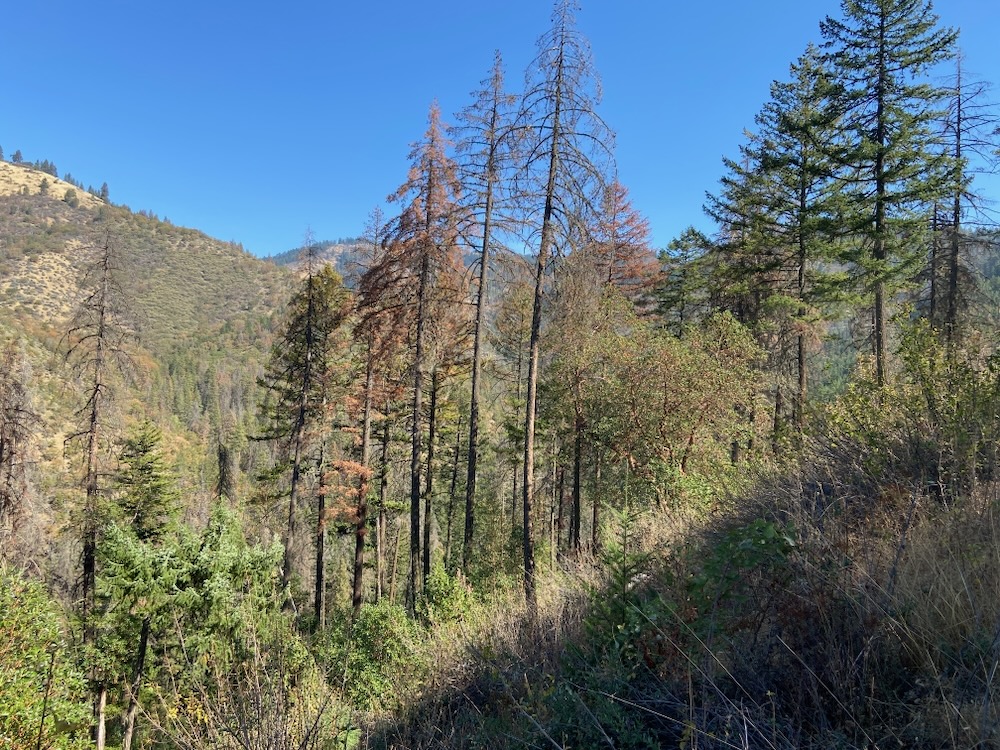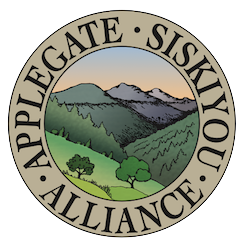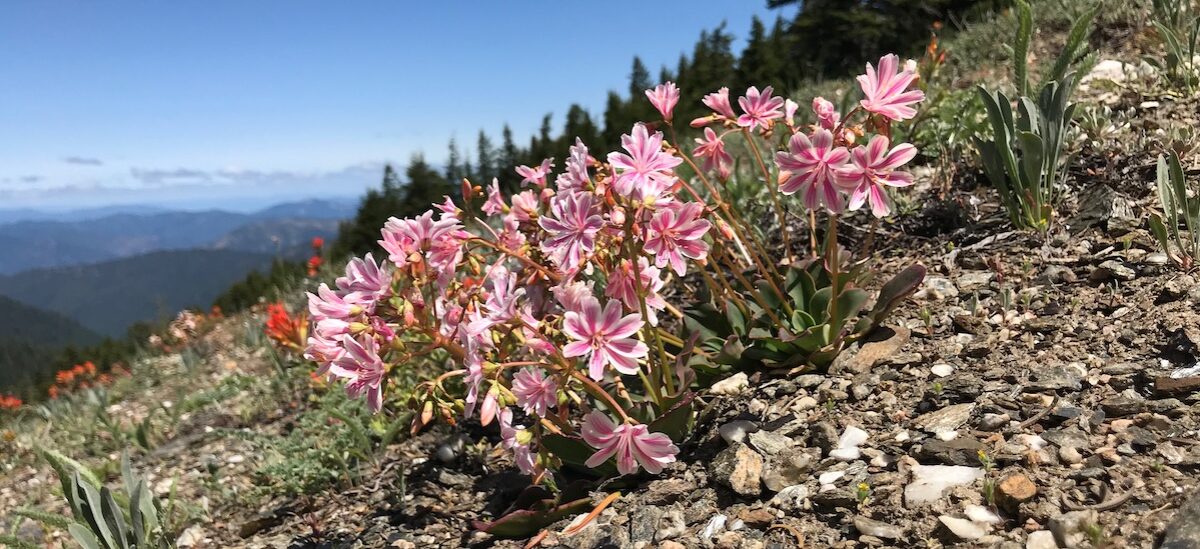
In recent years, the Medford District BLM has become increasingly secretive, non-transparent and hostile to both the environment and to the communities of southwestern Oregon. In areas like the Applegate Valley where opposition to old forest logging has been consistent and overwhelming, the BLM has changed the rules of engagement and has begun cutting the public out of the public land management planning process.
Rather than address public concerns or opposition to old forest logging proposals, the agency has instead insulated itself from critique by expediting the planning process, eliminating all avenues for meaningful public input and by refusing to implement site-specific scientific analysis and/or a credible environmental review process. This means that the BLM no longer notifies the public of its logging plans until the are “finalized” and no longer discloses, quantifies or analyzes a proposed project for cumulative and direct environmental impacts.

For many, many years the BLM has worked to circumvent its obligation to the public and the NEPA process, while pushing for increased timber production throughout western Oregon. In our region, this began to intensify in 2016 when the agency eliminated the Applegate Adaptive Management Area, a designation specifically meant to encourage open, transparent planning processes and public collaboration. Unfortunately, this trend has now culminated with the IVM Project where the public is being largely shut out of the process and timber sales are designed in the dark, without public oversight or engagement.
According to the IVM approval documents, public involvement is now fully discretionary on over 630,000 acres of BLM land in Southwestern Oregon, and the agency can log these landscapes with little to no public accountability. Although the BLM claims the IVM Project is based on the concepts of forest restoration, to many it is clear that the real goal is not just to get the cut out on BLM lands, but to also cut the public out of the process.
The Medford District BLM recently published its 2023 Timber Sale Plan identifying the commercial logging projects the agency intends to implement during the next year. On this list are four major timber sales in the Applegate River watershed, totaling 1,674 acres and an estimated 13.7 million board feet of public timber.

These four timber sales are proposed throughout the watershed on Sterling Creek, in the Middle Applegate, and on Williams Creek, where two large timber sales are currently proposed. Although these timber sales contain a wide variety of habitat types and forest conditions, they share one thing in common: a distinct lack of meaningful public involvement and a total lack of credible scientific analysis or environmental review.
The Late Mungers, Penn Butte, and Big Ben LSR timber sales are proposed for implementation under the provisions of the IVM Project. In these areas, the BLM has authorized a “program of work” which would log up to 20,000 acres and build up to 90 miles of new road in the next ten years, and the agency has begun implementing the IVM Project exclusively in the Applegate River watershed.

Each individual project or timber sale implemented under the IVM Project is now being fully designed, marked for timber sale removal and tentatively approved with a Draft Determination of NEPA Adequacy before the BLM notifies the public of their plans or incorporates a single shred of public input. Only after “finalizing” their timber sale proposal will the BLM release any information or accept public comment on the proposed projects.
No longer serving the public interest or working on our behalf, the Medford District BLM has fully committed to serving the interests of the private timber industry — the secrecy surrounding these four timber sales drives that point home.

For more information on the IVM Project and its influence on public involvement listen to this recent Jefferson Public Radio interview with ASA Executive Director, Luke Ruediger.
Late Mungers & Penn Butte Timber Sales

Currently, the Medford District BLM has proposed, but not fully approved the Late Mungers and Penn Butte Timber Sales above Williams and Murphy in the western portion of the Applegate Valley. These controversial timber sales propose logging old forest habitats in the Mungers Late Successional Reserve, an area designated specifically to protect northern spotted owl habitat and connectivity between watersheds. Yet, instead of protecting habitat, the project proposes logging old forests, degrading northern spotted owl habitat conditions and damaging the important connectivity that the area provides.
For two years, BLM timber planners designed the Late Mungers and Penn Butte Timber Sales under the provisions of the still unauthorized IVM Project and they did so in secret, refusing to provide any information to the public, despite repeated requests for information and project maps.
Although neither of these projects are currently approved, the agency has identified a March 2023 timber sale auction date for the Penn Butte Timber Sale, which has proposed logging 480 acres, producing an estimated 6.6 million board feet of timber. Meanwhile, the agency has identified a July 2023 auction date for the Late Mungers Timber Sale, which has proposed logging 312 acres totaling 2.5 million board feet.
For more information on the Late Mungers and Penn Butte Timber Sales, please review our recent blog posts and monitoring reports at the Applegate Siskiyou Alliance Blog.
Big Ben LSR Timber Sale

Currently very little is known about the Big Ben LSR Timber Sale and the BLM is refusing to provide information on this sale to either the public or to elected officials. Working totally in the dark, the agency has refused to provide basic information on the location of timber sale units and is designing yet another Applegate Valley timber sale in secret, with no public accountability or input.
Despite repeated requests for information, the BLM is claiming that no information can be made publicly available, yet they have identified a September 2023 auction date. Currently the agency has identified approximately 700 acres of logging units, and 3.5 million board feet of timber proposed for logging in the Big Ben LSR Project.
With an auction date in less than a year, clearly more is known about this sale than the BLM will share; however, all we have been told is that “the project will be roughly located South of Applegate and Ruch, bounded by the Applegate River and Thompson Creek.”
Lower Sterling Mortality Salvage

Although not propose for implementation under the IVM Project, the BLM has proposed to auction off the Lower Sterling Mortality Salvage Timber Sale including units along the extremely popular Sterling Mine Ditch Trail without any public comment or involvement. The newly released Categorical Exclusion and Decision Record identifies 182 acres proposed for logging while the 2023 Timber Sale Plan identifies up to 1.1 million board feet proposed for removal.
The project is located in the Deming Gulch, Armstrong Gulch and Hukill Hollow watersheds, where repeated commercial thinning operations have increased drought stress by reducing canopy, damaging microclimate conditions and logging large, old trees. This in turn has triggering a series of large bark beetle mortality events in the area, which are now targeted for “salvage” logging.
Rather than encouraging “resilience” and “forest health,” these previous timber sales have become the center of the most pronounced bark beetle outbreak in the Little Applegate River watershed, and a similar story is also playing out on Thompson Creek, Ferris Gulch and in other portions of the Middle Applegate River watershed.
Following the Buncom Timber Sale of the 1990s and the Sterling Sweeper Timber Sale of 2014, many stands commercially thinned by the BLM on lower Deming and Armstrong Gulch have became hotter and drier, with more open canopies and more pronounced drought stress. Since 2016, previously thinned stands on lower Deming Gulch, Armstrong Gulch, Hukill Hollow and other areas around the region have sustained large bark beetle and flat headed fir borer outbreaks. Instead of experiencing increased resilience and vigor, many of the trees in these stands have been colonized by bark beetles or flat headed fir borers, creating vast swaths of beetle-killed Douglas fir and ponderosa pine between Sterling Creek and Wolf Gap.
This same area was also “salvage” logged in 2018 during the Squishy Bug Timber Sale, which was intended to both “salvage” economic value from beetle killed timber, and to reduce the scope and scale of the beetle infestation. Yet, apparently like the “forest health” timber sales implemented before the Squishy Bug Timber Sale, the logging had no positive effect on future bark beetle mortality and may have made things worse. Now, for the second time in less than five years, the BLM is “salvage” logging directly within their previous timber sale units due to significant bark beetle mortality following commercial logging operations.
Secret Timber Sales & the End of Collaboration on BLM Lands
Totaling 13.7 million board feet, these four timber sales are being proposed for implementation in our watershed without considering our concerns, soliciting meaningful public input or disclosing the project proposals until timber sales have been “finalized” and fully designed.
In the Applegate Valley, we hear a lot from our public land managers and elected officials about collaborative forest management, while at the same time we watch the BLM erode the process, eliminate all avenues for meaningful public collaboration and operate in secrecy. Open access to information is the foundation of collaboration and the BLM is consistently refusing to provide basic information on timber projects affecting the communities and watersheds of the Applegate Valley. While we work towards meaningful dialogue and sound environmental stewardship, the BLM continues in the opposite direction.
Please join Applegate Siskiyou Alliance as we defend the forests of the Applegate and the right of the public to participate in public land management! Support our work with a generous donation and speak for the forests that surround you!

